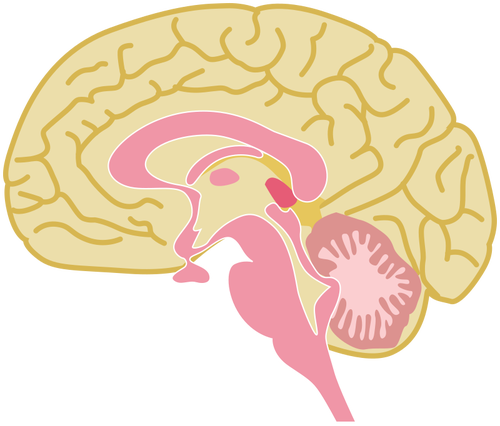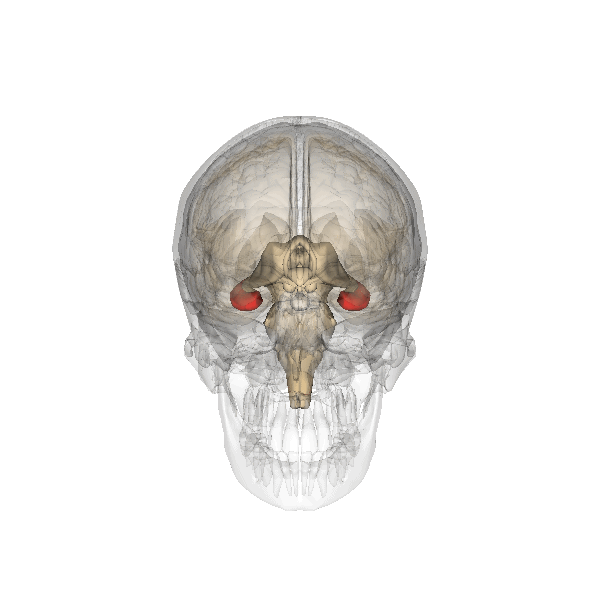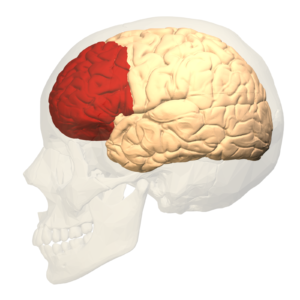
The Brain-Changing Benefits of Long-Term Exercise
Neuroscientist Wendy Suzuki gave a 13-minute TED Talk on the “brain-changing benefits of exercise” in March 2018 that millions of people have since seen. What she had to say – the result of her research and personal experience – bears repeating for the good of all. In sum, exercise is the most transformative thing that you can do for your brain today.
Physical activity, simply moving your body, has long-lasting and protective benefits for your brain that can last for the rest of your life. Exercise has immediate, positive benefits for your brain, including boosting your mood, focus, and memory. It can protect your brain from various conditions like depression, Alzheimer’s disease, or dementia.

Hippocampus, image from Anatomography maintained by Life Science Databases (Creative Commons Attribution-ShareAlike 2.1 Japan license – CC BY-SA 2.1 JP)

Prefrontal cortex of left cerebral hemisphere, image from Polygon data generated by Database Center for Life Science (Creative Commons Attribution-ShareAlike 2.1 Japan license – CC BY-SA 2.1 JP)
A brain is the most complex structure known to humankind. Two key areas are 1) the prefrontal cortex, right behind the forehead, which is critical for decision-making, focus, attention, and personality, and
2) the hippocampus, a key structure located deep in the temporal lobe that is critical for the ability to form and retain new long-term memories for facts and events. The hippocampus allows you to remember an event that lasts just a moment (your first kiss or the moment your first child was born) for an entire lifetime.
Through her research, Wendy Suzuki “discovered and experienced the brain-changing effects of exercise.” The intense concentration on her work led her to become sedentary and gain weight. So she went to the gym. There she noticed that sweat-inducing workouts put her in a great mood and gave her an energy boost.
After a year-and-a-half of regular exercise and more research, she noticed that she was able to focus and maintain attention for longer than had been the case previously, and her long-term memory was better. She hypothesized that the exercise she was doing was changing her brain. The literature on the effects of exercise on the brain supported what she had noticed: better mood, better energy, better memory, better attention.
After several years of focusing on this question, she came to this conclusion:
“Exercise is the most transformative thing that you can do for your brain today.”
Why? Here are the reasons:
- Exercise has immediate effects on your brain. A single workout will instantly increase levels of neurotransmitters like dopamine, serotonin, and noradrenaline. That will increase your mood right after your workout. A single workout can improve your ability to shift and focus attention, and that focus improvement will last for at least two hours. Studies have shown that a single workout will improve your reaction times, which basically means that you will be faster at catching something that falls off the counter, for instance. But these immediate effects are transient, helping you just after the workout. To get the long-lasting effects, it’s necessary to increase cardiorespiratory function. That’s because exercise actually changes the brain’s anatomy, physiology, and function. In fact, exercise produces brand new brain cells in the hippocampus that increase its volume and improve long-term memory.
- The most common finding in neuroscience studies that look at the effects of long-term exercise is the improved attention function, dependent on the prefrontal cortex. The exercise not only produces better focus and attention but increases the volume of the hippocampus, leading to immediate as well as long-lasting effects of mood through the good mood neurotransmitters. But the most transformative thing that exercise will do is protect the brain. Thinking about the brain like a muscle helps to understand that the more a person works out, the bigger and stronger their hippocampus and prefrontal cortex will become. That’s important because the prefrontal cortex and the hippocampus are the two areas that are most susceptible to neurodegenerative diseases and normal cognitive decline in aging. Increased exercise over a lifetime will not cure dementia or Alzheimer’s disease, but it will create the strongest, biggest hippocampus and prefrontal cortex, meaning it will take longer for these diseases to actually have an effect.
So what’s the minimum amount of exercise needed to get these changes?
According to Wendy Suzuki, a general guideline is to exercise 3-4 times a week for a minimum of 30 minutes and to include some aerobic exercise (which increases the heart rate). Going to the gym isn’t necessary. Instead, power walking is beneficial, or taking the stairs, or even power vacuuming.
In essence, long-term exercising not only gives you a happier, more protective life today but protects your brain from incurable diseases. According to Wendy Suzuki, “It will change the trajectory of your life for the better.”
Watch this short video about how brisk walking slows aging:

